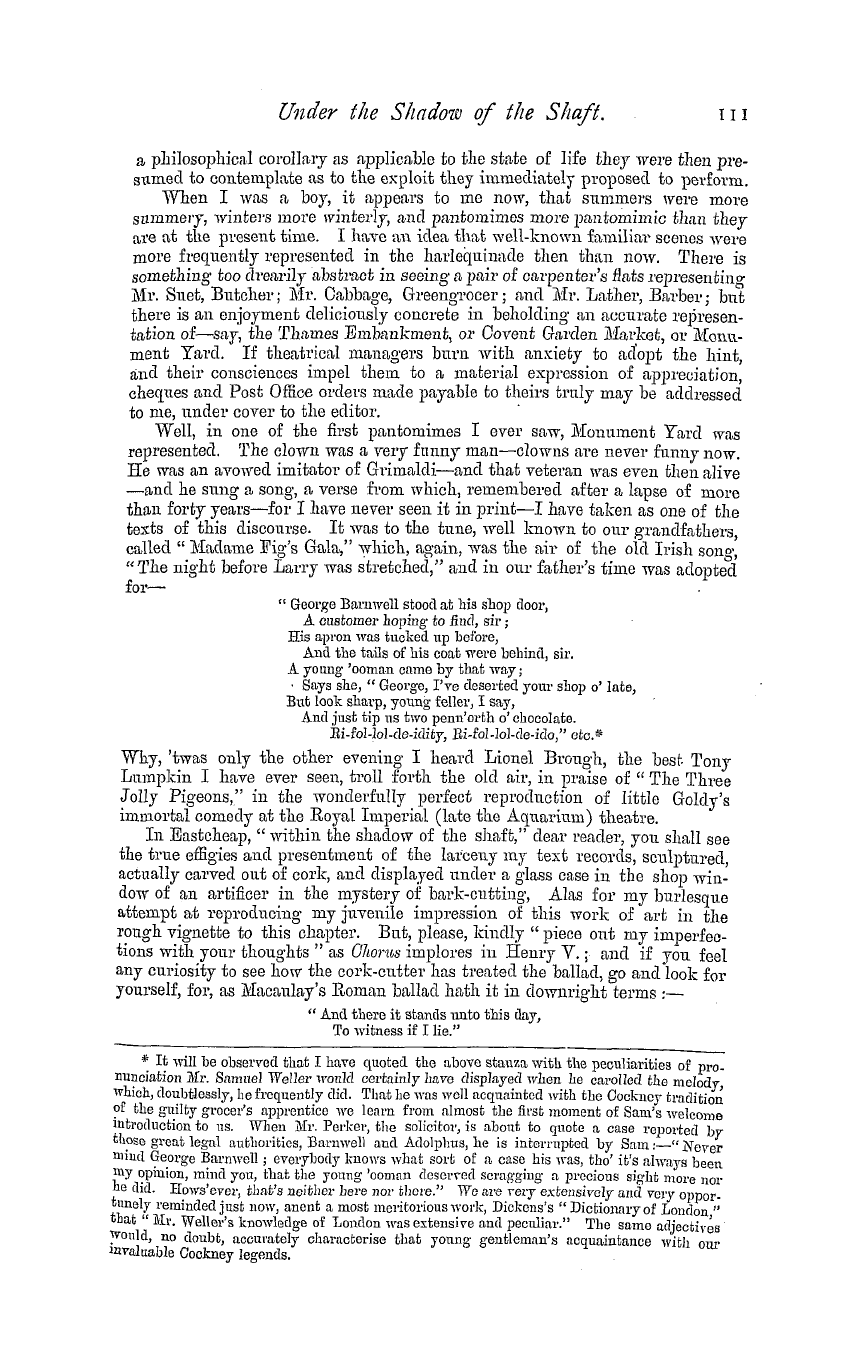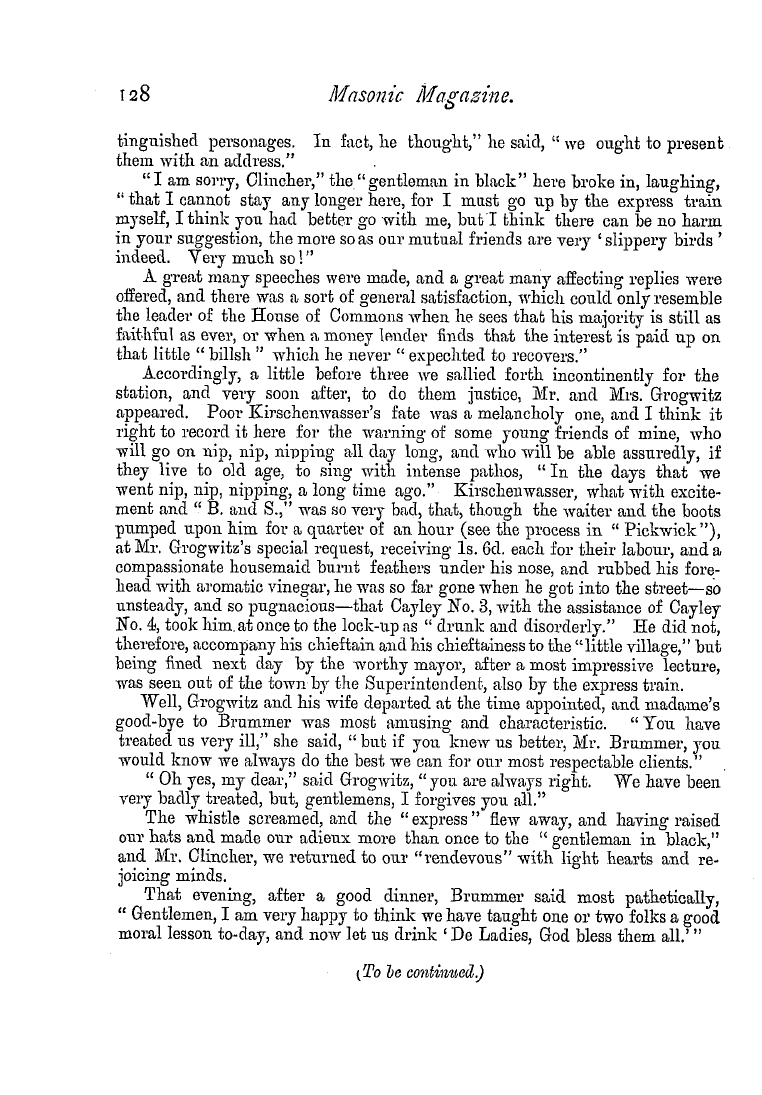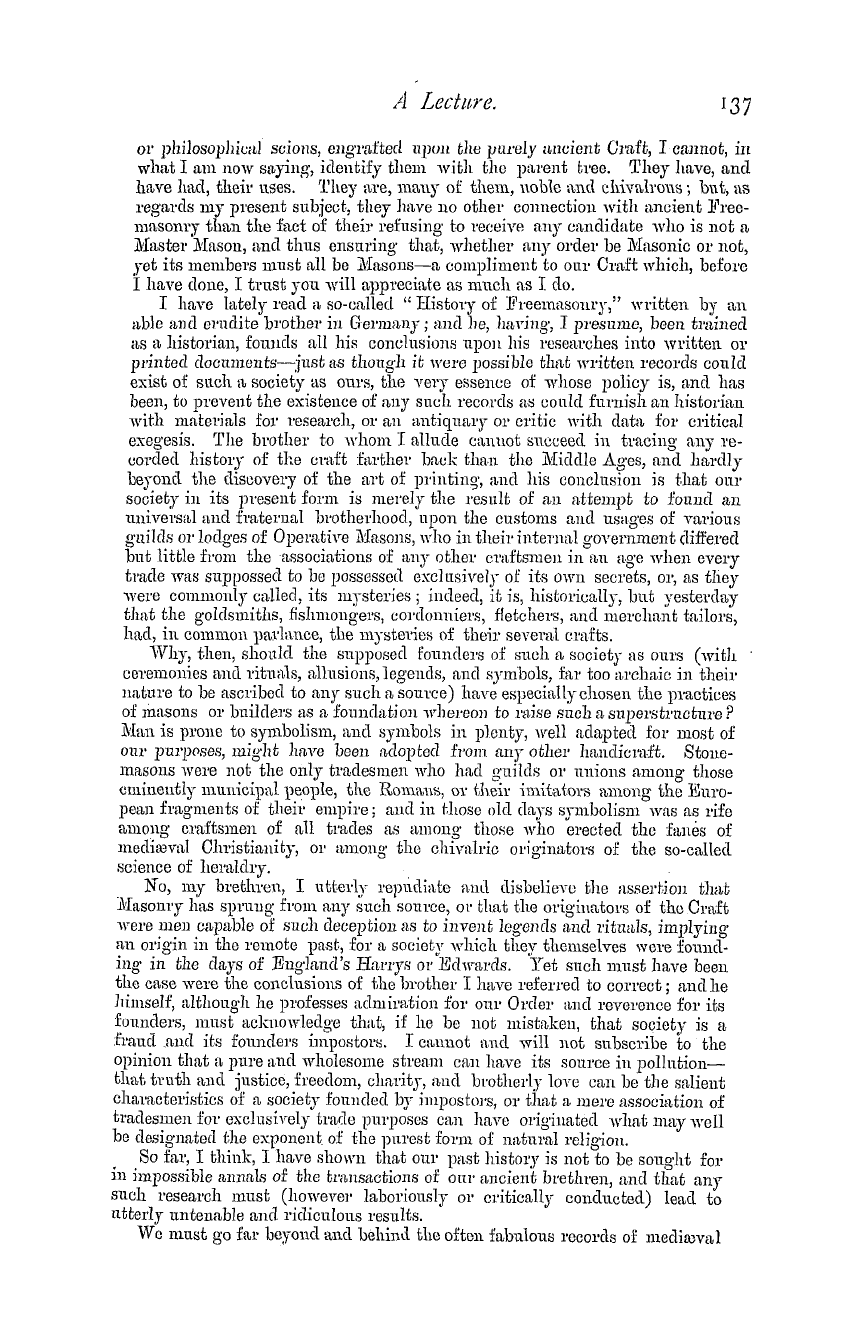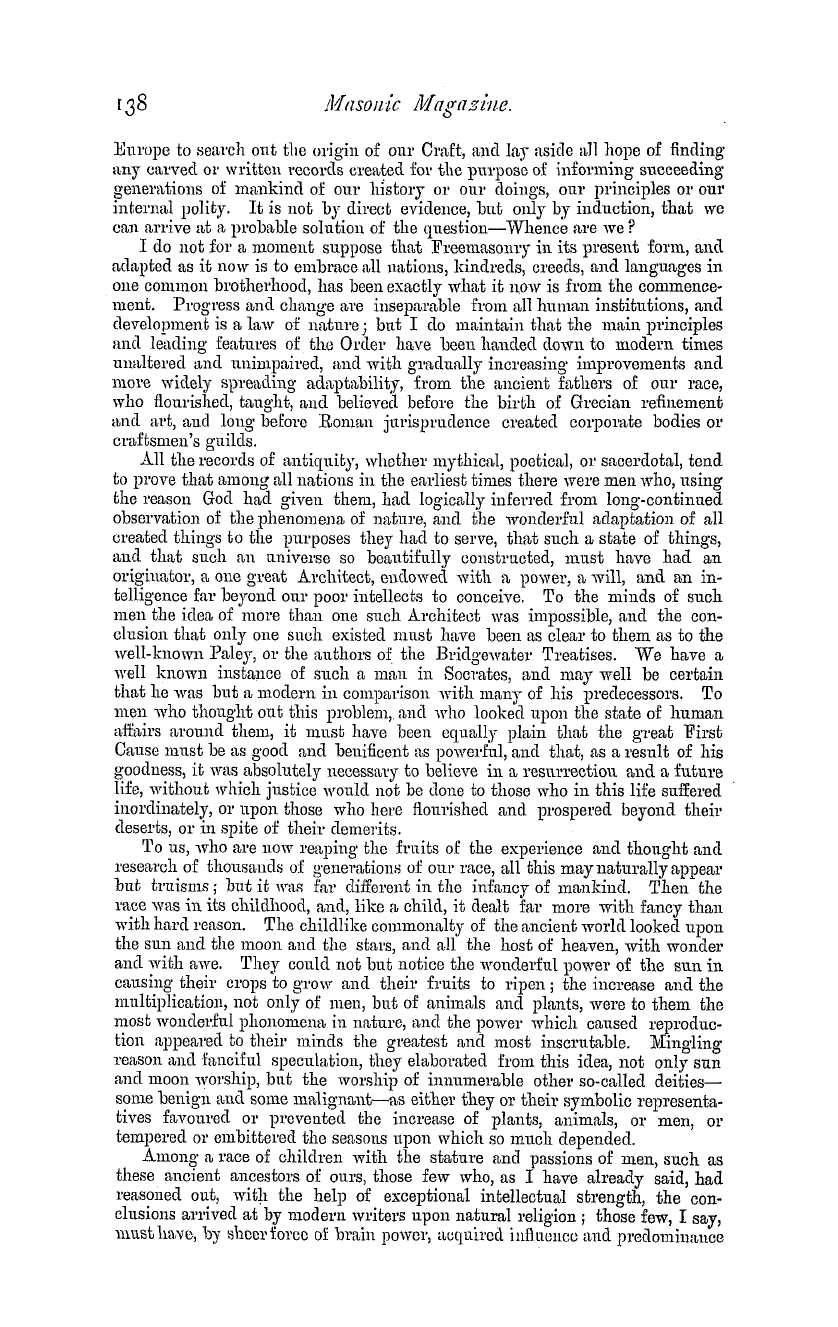-
Articles/Ads
Article A FEW DAYS ON THE YORKSHIRE MOORS. ← Page 6 of 7 →
Note: This text has been automatically extracted via Optical Character Recognition (OCR) software.
A Few Days On The Yorkshire Moors.
behind , in a direct line , the noble cathedral of Ripon . Conveyances have already commenced to bring their living loads , and . the timid lovel y deer bound away into the wnocls , and the remembrance of them is like a dream . On the right is Studley Hall , never shown to visitors . An old woman shows us over the new church , built in 1871 , at great cost . The foundation was laid by the Marchioness of Ripon . The interior- is most superbevery detail seems
, to be perfected , and the whole church is one gorgeous mass of beautiful fretwork and g ilding . No expense has been spared ; painting , marble of every description , and mosaic work , are here , almost equalling the finest specimens to be seen on the Continent . It certainl y far surpasses anything we ever saw before , and a whole day would be well spent in investigating its beauties . We reluctantly leave this elegant building , and enter the groundsafter paying the
, fee , and inscribing our names in a book . A lake is the first thing that takes our attention , surrounded by banks as smooth as velvet . It is kept in the neatest order , with the water falling in perfect precision over a series of stone steps , and the edges studded Avith statuary , the gladiators forming a striking group . The " moon" and "crescent" ponds are seen further on through the trees , with statues of Bacchus , Neptune , and Galen on their sides . The " Temple of
Piety" and " Octagon Tower" are seen at the other side . Many large trees have been planted in the grounds at remote dates , of beech , oak , yew , ancl fir : and a hemlock spruce ( Wellingtonia Gigantea ) and sycamore are remarkable instances . We pass statues of Hercules and Antaeus , along the primmest of walks , till Ave come to the " Temple of Piety , " with a basso-relievo of a celebrated Roman ladyancl busts of Titus ancl Nero . A few yards morethrough
, , a tunnel , and we reach the Octagon Tower , from which a splendid view of the whole grounds can be bad . Every now and then we cross rustic bridges with mimic waterfalls beneath them , and breaks in the trees afford charming views with a set purpose to surprise . The " Temple of Fame " is the next view-point , after which we gain "Anne Boleyn ' s Seat , " also called the " Surprise Temple . " This is supposed to be the finest of all the views ; formerlthe
y , guide used to take the visitors behind the seat , and , throwing open the doors , expose the startling scene ; now you do it yourself . The ruins of Fountains Abbey are in the centre , and before them stretches a beautiful lake , the most picturesque scene that could be imagined . Ebenezer Elliott fitl y describes it : —
" Abbey ! for ever smiling pensively H OAV like a thing of nature dost thou rise . Amid her loveliest works ! as if the skies Clouded with grief , were ai-cbed thy roof to be . " Walking round the lake Ave pass "Robin Hood ' s Well , " and reach the extensive ruins ; " those ancient towers , Where never now the vespers ring , But lonely at the midnight's hours Flits by the bat on dusky wing . "
On the left are the foundations of the Abbot ' s house , barns , stables , kilns , tan house , dovecotes , and forges . Two immense yew trees are close at hand , all that remain of what were once knoAvn as the " Seven Sisters ; " and the old mill runs on as merrily as ever , fed b y the " still Hre . " Crossing the bridge , we come to the ancient " Gate House , " or " Porter ' s Lodge , " and enter the church by the great west door , which had formerl y a curious Galilee porch in front . The ruins are awe-striking in their immensity , and pensive thought fills the
visitor who walks within them ; the large windows denuded of all their fret work and ready to totter altogether ; the hollow shells of the great tower and hall ; the dismal cloisters , dark and clamp , and suggestive of the stealth y tread of some cowled monk ; all tend to inspire one with the solemnity of the place , where , ages ago , the monks exercised their vigils , and the abbots used their authority . The other remaining conventual buildings are the kitchen , base
Note: This text has been automatically extracted via Optical Character Recognition (OCR) software.
A Few Days On The Yorkshire Moors.
behind , in a direct line , the noble cathedral of Ripon . Conveyances have already commenced to bring their living loads , and . the timid lovel y deer bound away into the wnocls , and the remembrance of them is like a dream . On the right is Studley Hall , never shown to visitors . An old woman shows us over the new church , built in 1871 , at great cost . The foundation was laid by the Marchioness of Ripon . The interior- is most superbevery detail seems
, to be perfected , and the whole church is one gorgeous mass of beautiful fretwork and g ilding . No expense has been spared ; painting , marble of every description , and mosaic work , are here , almost equalling the finest specimens to be seen on the Continent . It certainl y far surpasses anything we ever saw before , and a whole day would be well spent in investigating its beauties . We reluctantly leave this elegant building , and enter the groundsafter paying the
, fee , and inscribing our names in a book . A lake is the first thing that takes our attention , surrounded by banks as smooth as velvet . It is kept in the neatest order , with the water falling in perfect precision over a series of stone steps , and the edges studded Avith statuary , the gladiators forming a striking group . The " moon" and "crescent" ponds are seen further on through the trees , with statues of Bacchus , Neptune , and Galen on their sides . The " Temple of
Piety" and " Octagon Tower" are seen at the other side . Many large trees have been planted in the grounds at remote dates , of beech , oak , yew , ancl fir : and a hemlock spruce ( Wellingtonia Gigantea ) and sycamore are remarkable instances . We pass statues of Hercules and Antaeus , along the primmest of walks , till Ave come to the " Temple of Piety , " with a basso-relievo of a celebrated Roman ladyancl busts of Titus ancl Nero . A few yards morethrough
, , a tunnel , and we reach the Octagon Tower , from which a splendid view of the whole grounds can be bad . Every now and then we cross rustic bridges with mimic waterfalls beneath them , and breaks in the trees afford charming views with a set purpose to surprise . The " Temple of Fame " is the next view-point , after which we gain "Anne Boleyn ' s Seat , " also called the " Surprise Temple . " This is supposed to be the finest of all the views ; formerlthe
y , guide used to take the visitors behind the seat , and , throwing open the doors , expose the startling scene ; now you do it yourself . The ruins of Fountains Abbey are in the centre , and before them stretches a beautiful lake , the most picturesque scene that could be imagined . Ebenezer Elliott fitl y describes it : —
" Abbey ! for ever smiling pensively H OAV like a thing of nature dost thou rise . Amid her loveliest works ! as if the skies Clouded with grief , were ai-cbed thy roof to be . " Walking round the lake Ave pass "Robin Hood ' s Well , " and reach the extensive ruins ; " those ancient towers , Where never now the vespers ring , But lonely at the midnight's hours Flits by the bat on dusky wing . "
On the left are the foundations of the Abbot ' s house , barns , stables , kilns , tan house , dovecotes , and forges . Two immense yew trees are close at hand , all that remain of what were once knoAvn as the " Seven Sisters ; " and the old mill runs on as merrily as ever , fed b y the " still Hre . " Crossing the bridge , we come to the ancient " Gate House , " or " Porter ' s Lodge , " and enter the church by the great west door , which had formerl y a curious Galilee porch in front . The ruins are awe-striking in their immensity , and pensive thought fills the
visitor who walks within them ; the large windows denuded of all their fret work and ready to totter altogether ; the hollow shells of the great tower and hall ; the dismal cloisters , dark and clamp , and suggestive of the stealth y tread of some cowled monk ; all tend to inspire one with the solemnity of the place , where , ages ago , the monks exercised their vigils , and the abbots used their authority . The other remaining conventual buildings are the kitchen , base















































